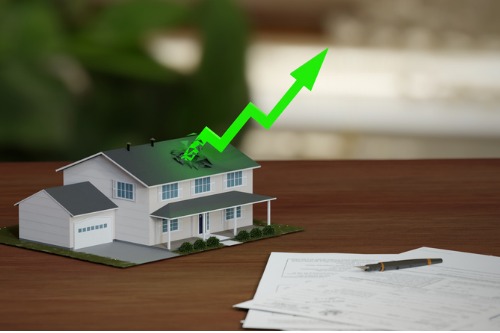

Australia’s property boom is breaking records across almost every category: since the start of 2021, there has been unprecedented growth in home loans, property prices and house auctions.
While it is clearly a great time to be working in Australia’s property sector, it should come with the obvious caveat that every boom has a bust, and it is yet to be seen whether this is a sustainable rise or an artificial bubble that will inevitably burst.
Many brokers will never have experienced anything like this before, so here’s a crash course in what is happening, how we got here and how long it can go on for.
First up, it’s important to understand that there isn’t one factor behind Australia’s property boom. In fact, it’s a combination of several factors and probably couldn’t have happened without them all occurring at the same time, which is why several experts have called it “a perfect storm’.
There are the low interest rates, which encourage people to take out credit, and which cause a price war among banks that encourages them to offer better deals. There’s the government incentives for First Time Buyers, which have made many bring forward their property buying intentions to take advantage of government help. And, of course, there’s COVID: for those already on the market who might have had spent their money on foreign holidays or enjoying themselves in pubs and restaurants, none of that happened in 2020, and all the money they saved is freed up for other purposes.
The role of the pandemic can be seen in two differing ways. As mentioned above, the effect of not spending money in 2020 is now filtering into the economy. More people than previously have cash that they can use towards moving up the property ladder, or alternatively, invested that money into their properties and are now looking to cash in by putting their homes on the market while the boom is inflating prices.
On the other hand, plenty of people who were happy to rent somewhere within travelling distance of city CBDs are now working from home. That means they need more space, and not necessarily close to metro areas. That has exacerbated a movement that was already taking place away from the cities and into regional areas, with thousands escaping expensive inner city renting in favour of owning a property in the country.
Interest rates are always vital to a boom, and Australia is going through an interest rate price war. The Reserve Bank of Australia dropped the cash rate, which dictates all other interest rates, to its lowest ever level of 0.1% in November and has kept it there since.
Since then, it has been a race to the bottom in terms of interest rates. Three of the Big Four banks have rates running at less than 2% on two-year fixed loans, which is close to the lowest that have ever been advertised in Australia. Non banks have dropped even further than that, with one offering as low as 1.74%.
Incentives like HomeBuilder have seen First Time Buyers enter the market in a big way, with developers and experts struggling to recall a time a time when they held so much sway. Part of that is people priced out of cities buying elsewhere, but a lot of it is people taking advantage of government schemes to get onto the ladder in these favourable conditions.
Australia’s property boom has been brought forward by these incentives – it might have happened anyway, just later – but the fun can’t last. HomeBuilder caused plenty of FOMO upon those who might not otherwise have bought, and brought them into the market.
Conditions like these are, obviously, very unusual and can’t be expected to last. HomeBuilder will end soon. Banks can’t be expected to keep cutting their rates, and unless the RBA decides to go to negative interest rates (which they won’t), then they can’t go any lower either. The RBA has said that the cash rate won’t rise until 2023 at the very earliest, but experts are starting to wonder if that might be brought forward.
But if property prices keep rising but incomes stay stable (as they have been for a long time), then young people will finder harder to get onto the market, which increases the chance of the bubble bursting. That means we have to find a way of slowing down Australia’s property boom to stabilise the market and keep everything in check. Something has to give, but for now, the property boom shows little sign of slowing down.
